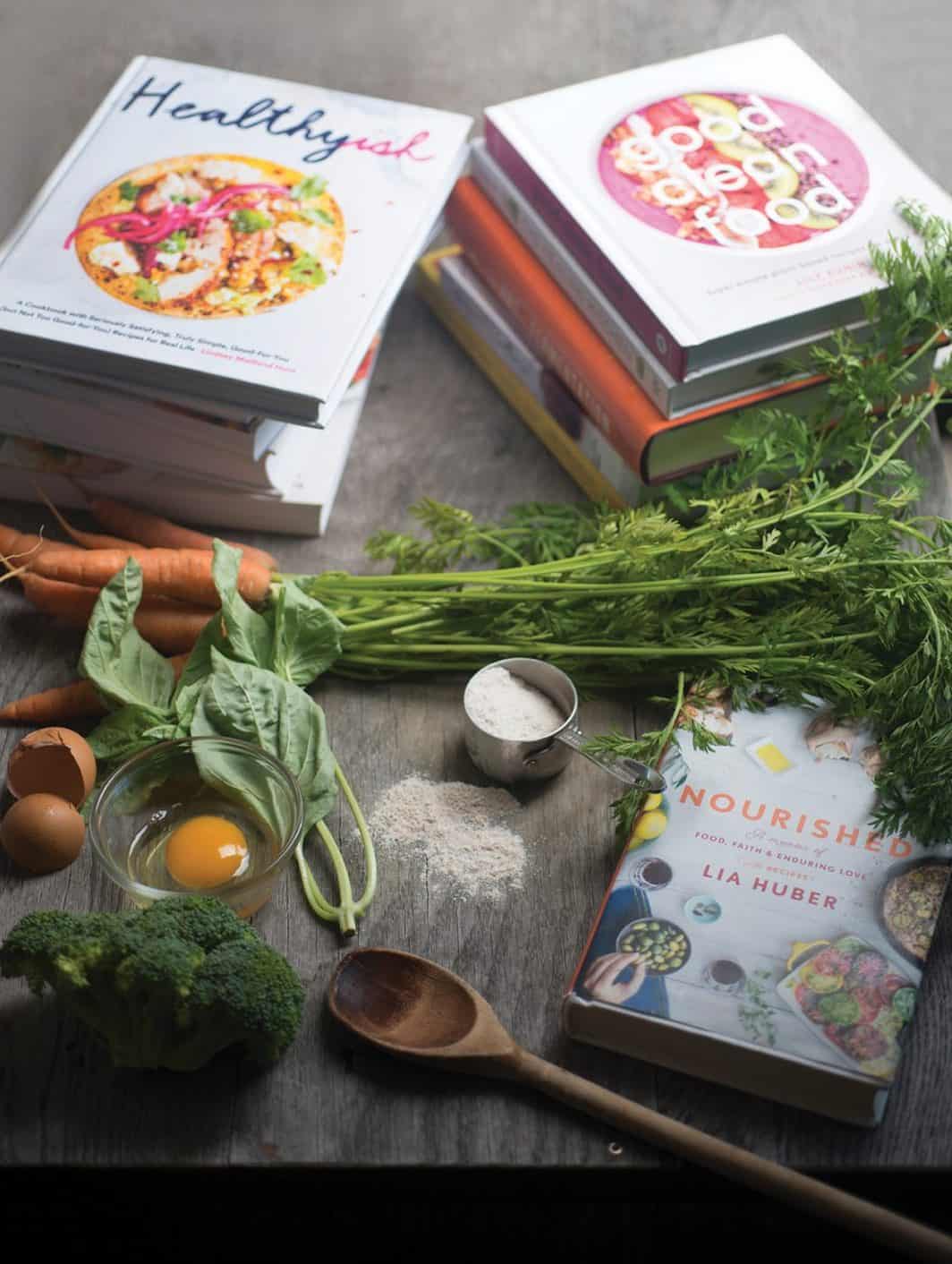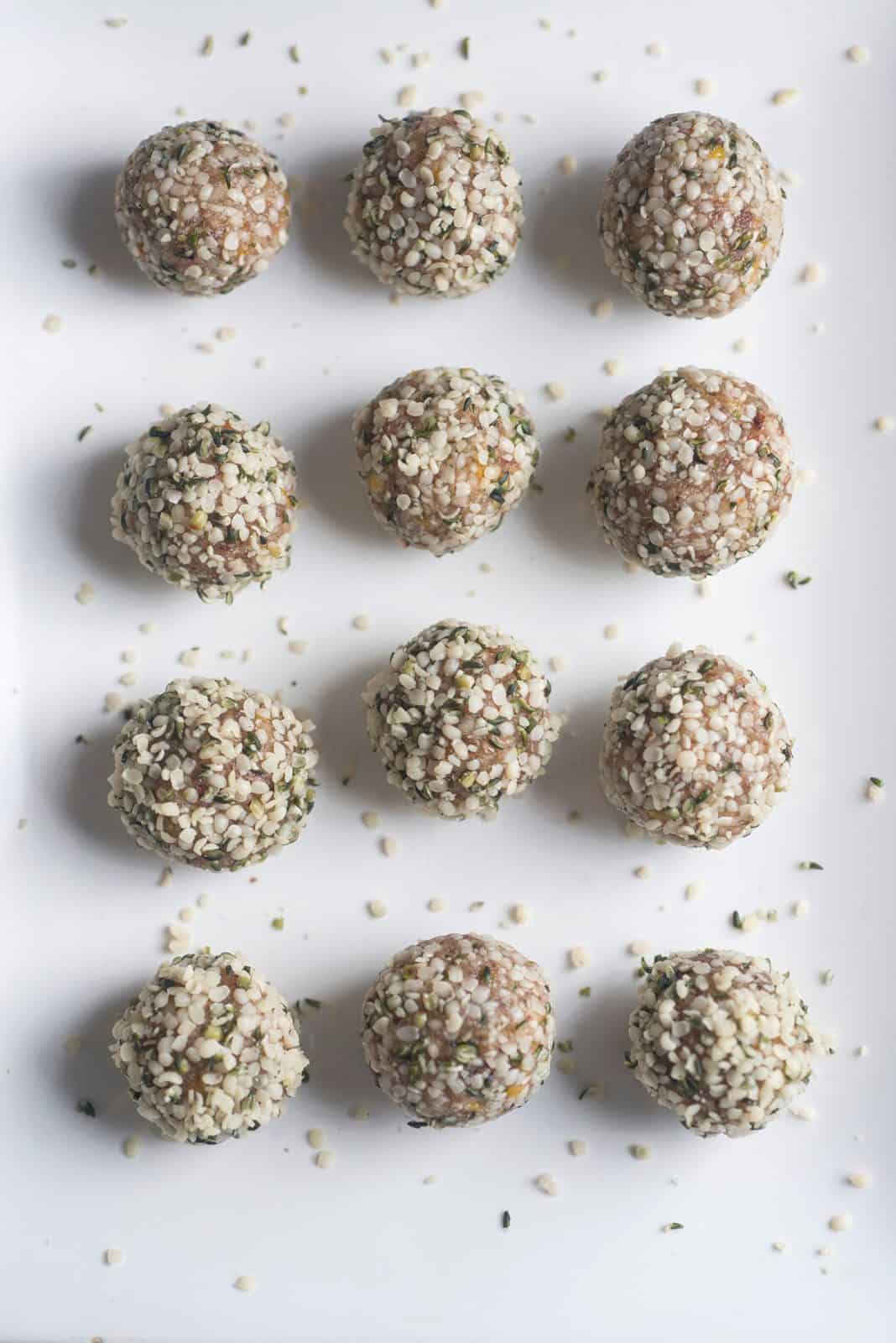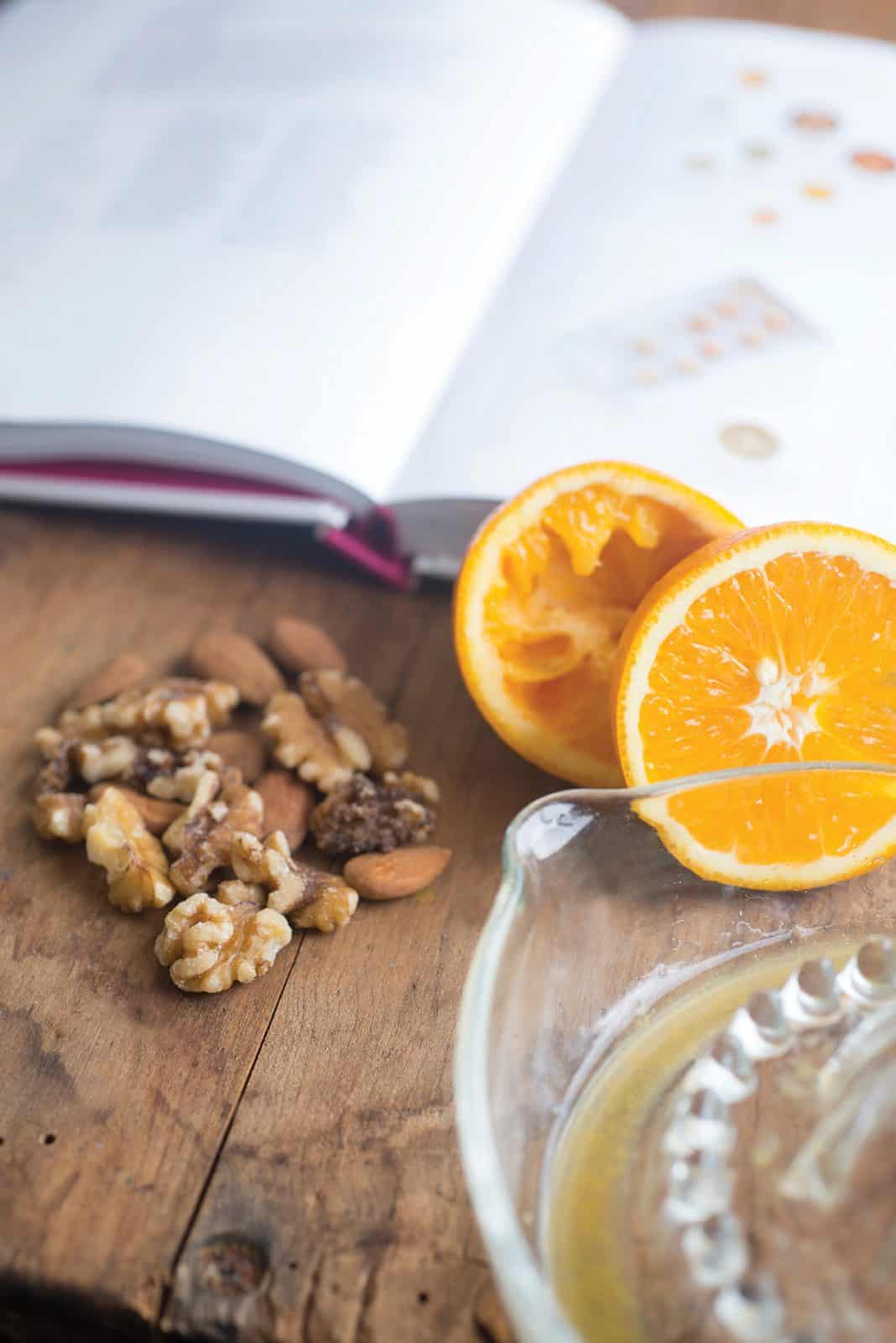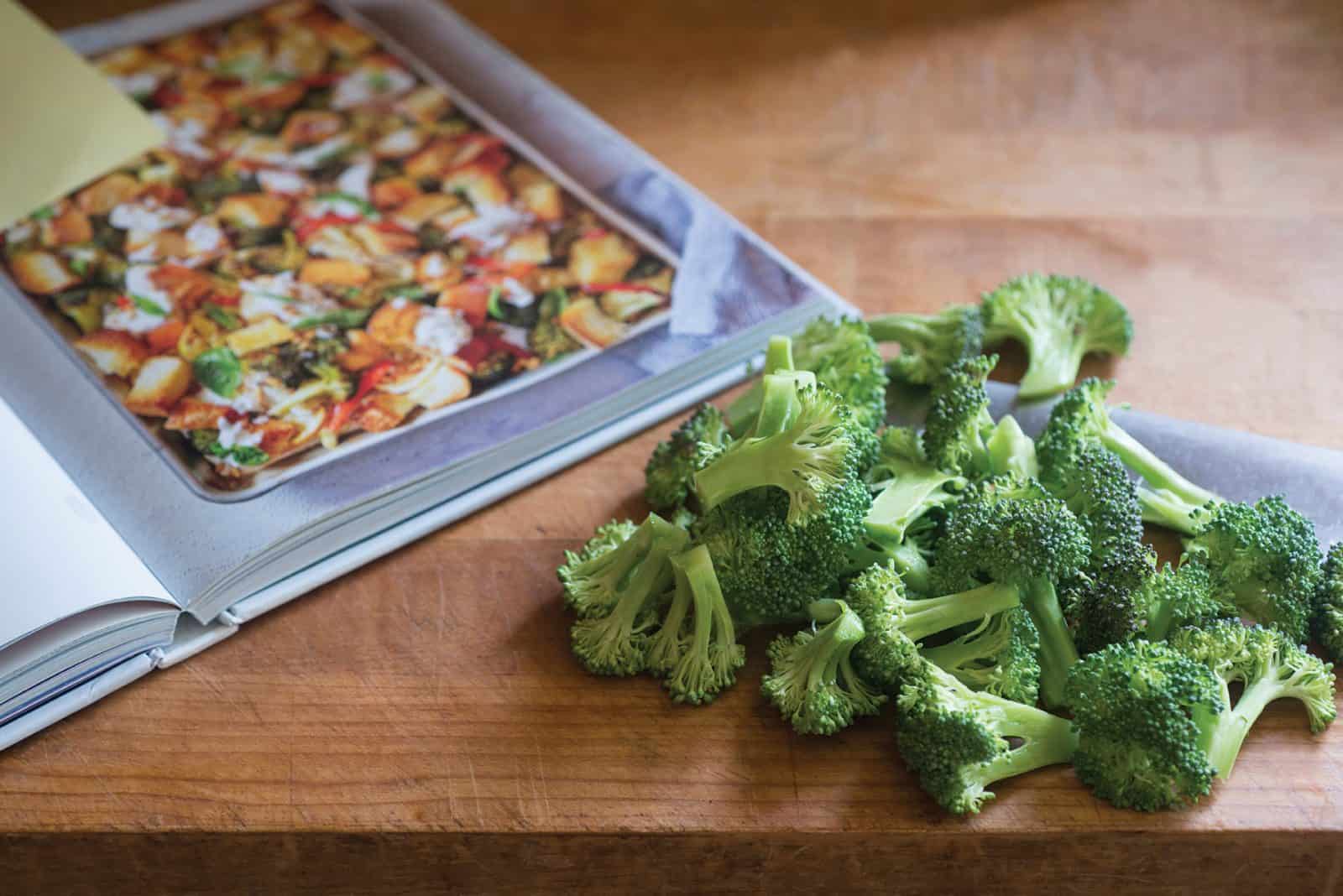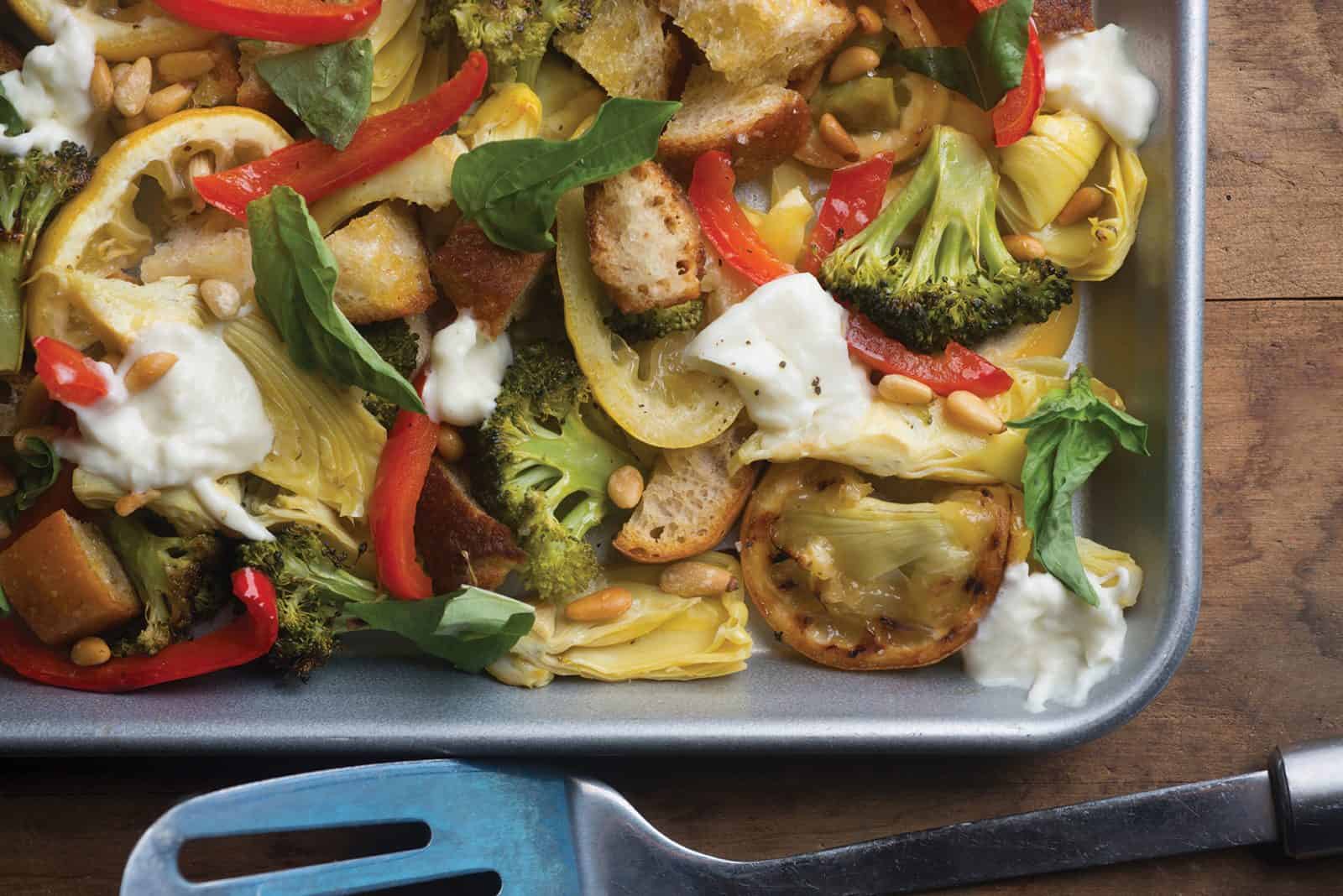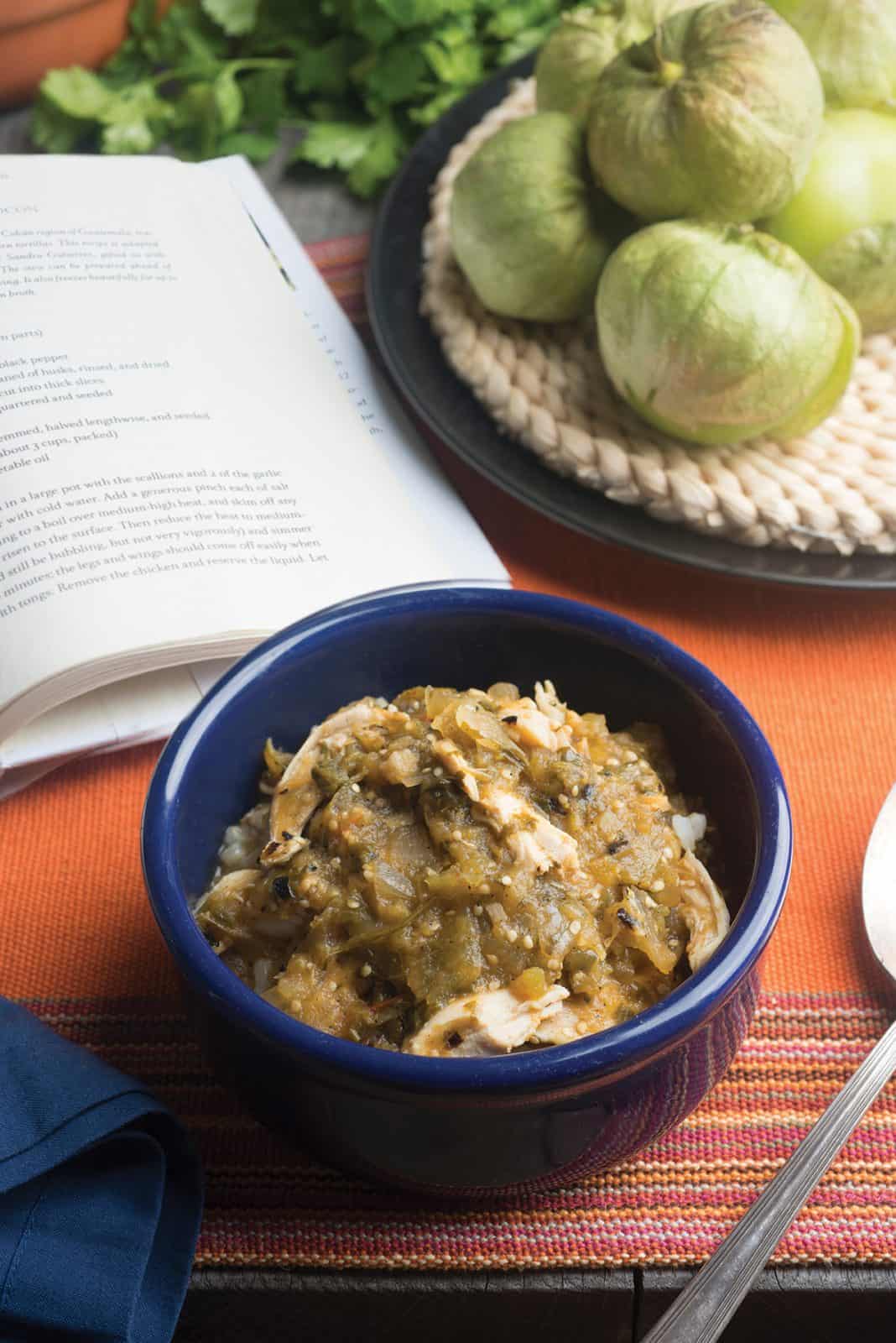Story and Photography by Paulette Phlipot
—
“It’s 2018 and you mean to tell me that you are still collecting cookbooks?” asks my friend Luke as he reaches for seconds of roasted potatoes.
From across the table, Alison puts down her wine glass and jumps in. “Don’t you just search the internet for recipes? Everyone does. It’s the only way I find them.”
We were enjoying my friends Sarah and Mike’s school auction bid of a dinner cooked in their kitchen by a local private chef. The evening started with ten of us huddled around the kitchen island as a chef prepared the meal, teaching us tricks and techniques along the way. This led to quite the lively conversation, naturally centered on food and eating. The discussion went on for hours.
Full from the exquisite meal, I went home with the cookbook question echoing in my head. It’s not that I don’t use the internet to find recipes. In fact, I rely on Pinterest to keep all of my digital favorites organized. I’ve even toyed with the idea of getting the Paprika app, as several friends incessantly remind me how fabulous it is for organizing recipes and making grocery lists.
So why do I continue to add more cookbooks to my collection?
Well, for one obvious reason: I cook all the time and am always in need of new ideas. No matter how deep I dive into the digital realm, physical cookbooks will always hold a place in my heart. (And in my kitchen!) There is something about the tangibility of holding a cookbook in hand, flipping the pages, and stumbling upon recipes that I wouldn’t even think to look up online. Cookbooks are more than just a collection of recipes, they tell a story—often about a place or a person—and they do so, sometimes, through the simple organization of recipes.
I also find comfort in the fact that recipes published in a book have gone through extensive curation and testing before they reach the reader. This is especially important when trying out a new recipe on my patient (yet hungry) husband and daughter. Some books are created from popular food blogs, too, simplifying the task of sifting through hundreds of recipes on a favorite website. Only the best of the site are chosen for the book. And this narrows down the hard part—deciding what to make.
And though it may sound counterintuitive, cookbooks help me with time management. Prioritizing and protecting my meal-prep time helps me maintain the health of my family (and I often joke that it also protects my mental health). A million other things could easily get in the way of cooking time and give me every excuse to buy prepackaged meals instead of making them from scratch with whole, unaltered ingredients. So before I dive into the dinner routine, I put everything digital away and remind myself that good health (both physical and mental) involves carving out time to control what we put in our bodies. This mantra helps me slow down and embrace the process.
Despite the surplus of online recipes, publishing houses still produce print cookbooks. And they’re more beautiful than ever, really—offering much more than just recipes. Now, I don’t suggest buying every newly released cookbook out there. However, I do think it’s important to find a chef, food writer, or nutritionist who creates recipes that foster the way you want to eat. And make sure that the book aligns with your philosophies. For me, simple and delicious recipes made from real food ingredients support my values. See below for a few of my favorites…
—
Nourished
A Memoir of Food, Faith & Enduring Love
by Lia Huber
This is not really a cookbook, although there is a recipe at the end of each chapter. It’s more a memoir about Huber’s travels and explorations of life in which she also piques your appreciation for culture, food, and nourishment. It’s hard to put this book down—Huber makes you want to cook. And as you make her recipes, you feel the connection to the people and the places discussed throughout her story. You can actually experience the Thanksgiving when she and her husband Christopher sat on the floor together, eating Pollo En Jocon (the Guatemalan stew recipe posted below) by candlelight while waiting to meet their newly adopted daughter.
—
Good Clean Food
Super Simple Plant-Based Recipes for Every Day
by Lily Kunin
This vibrant cookbook covers the basics using beans, grains, lentils, dressings, salsas, and pestos. It will inspire you to make every dinner “build your own bowl” night. I love the recipe for Blueberry-Lime Chia Pops (it’s the best homemade popsicle recipe ever—and I have made a lot). And for an on-the-go snack that’s not filled with sugar, colors, or preservatives, the Walnut Orange Globes included in this article (below) do not disappoint. Not all the recipes in this book are for eating; Kunin works in some self-care body recipes, as well. Yum!
—
Healthyish
A Cookbook with Seriously Satisfying, Truly Simple, Good-For-You (but Not Too Good-For-You) Recipes for Real Life
by Lindsay Maitland Hunt
Do you have a family member that’s convinced that if a meal is “healthy” it can’t taste good? If so, this cookbook will banish that stigma. Hunt’s recipes are not over-the-top healthy. Instead, they offer a good mix of flavor, balance, and ease. If you are new to the kitchen, there are lists and advice to help guide your way. Hunt’s recipe featured below, Crispy Broccoli, Pepper, and Burrata Sheet Pan Dinner, makes a great main course (you can always add meat on the side for extra protein), while eliminating additional dinner pans at the same time.
Walnut Orange Globes
Makes about 15 balls
—
The citrus in these brain-boosting globes not only creates the most amazing flavor, but the smell energizes you and encourages concentration. Combined with walnuts and hemp hearts, this quick snack will fuel your afternoon.
—
Note: Double the batch and store them in the fridge or freezer. Then pair them with a big mug of tea when you’re starting to drag—you’ll want to have plenty on hand.
—
½ cup raw walnuts
½ cup raw almonds
¾ tablespoon raw honey or maple syrup
¼ teaspoon Valencia orange zest
1 tablespoon fresh Valencia orange juice
¼ teaspoon lemon zest
Pinch of fine sea salt or pink salt
Almond milk or water, if needed
2 tablespoons hemp hearts, for rolling
- Pulse the walnuts and almonds in a food processor to form a crumbly mixture of small chunks.
- Add the honey, orange zest and juice, lemon zest, and salt and blend. The mixture should stick together when pinched between your fingers.
- Add a splash of almond milk or water, if needed.
- Pour the hemp hearts into a shallow plate.
- Using a small cookie scoop or teaspoon, scoop the nut mixture and form it into balls, then roll each ball in the hemp hearts.
- Place the balls on a parchment-lined plate and chill for 30 minutes before serving.
- Store the balls in an airtight container in the fridge for up to a week or in the freezer for 3 months.
(From Good Clean Food by Lily Kunin, Abrams Books, 2017)
Crispy Broccoli, Pepper, and Burrata Sheet Pan Dinner
Serves 4
—
For this recipe, look for crusted bread with a squishy middle. Anything too dense will not crisp up or brown nicely. Also, use
a rimmed baking sheet; otherwise the contents may slide off
into the oven.
—
1 ½ pounds broccoli florets from 2 generous broccoli heads (about 9 cups)
2 large bell peppers, seeded and sliced into ½-inch strips
1 can quartered artichoke hearts, drained
1 lemon, sliced
3 tablespoons olive oil
Kosher salt and freshly ground black pepper
8 ounces soft French bread, cut into 1-inch cubes
8 ounces burrata or fresh mozzarella cheese
¼ cup pine nuts, toasted
½ cup fresh basil leaves, torn
*Add meat on the side for extra protein
- Preheat your oven to 425°F, with a rack positioned toward the top.
- Toss the broccoli, bell peppers, artichokes, lemon, 2 tablespoons of the oil, 1 1/2 teaspoons salt, and 1 teaspoon pepper on a rimmed baking sheet.
- Roast, tossing once, until the broccoli and peppers are just tender,
20 to 24 minutes. - Toss the bread with the remaining 1 tablespoon oil and 1/4 teaspoon each salt and pepper.
- Scatter the bread cubes evenly over the vegetables.
- Return the baking sheet to the oven and roast until the bread cubes are golden brown and crispy on the outside and the vegetables are fork-tender, 14 to 18 minutes more.
- Using your hands, shred the burrata into bite-size pieces and scatter over the baking sheet.
- Sprinkle the pine nuts and basil over the top and season with additional salt and pepper, if you like.
- Serve immediately.
(From Healthyish by Lindsay Maitland Hunt, Abrams Books, 2017)
Pollo en Jocon
Serves 6-8
—
This chicken stew from the Cobán region of Guatemala is traditionally served over rice with warm corn tortillas. It can be prepared ahead of time, chilled, and reheated before serving. It also freezes beautifully for up to two months, as does the leftover chicken broth.
—
1 3- to 4-pound chicken
2 scallions, white and green parts
6 garlic cloves
Salt and freshly ground black pepper
20 large tomatillos, cleaned of husks, rinsed, and dried
½ large yellow onion, cut into thick slices
1 green bell pepper, quartered and seeded
1 plum tomato
2 Serrano chiles, stemmed, seeded, and cut in half lengthwise
1 bunch cilantro (about 3 cups, packed)
1 tablespoon vegetable oil
- Place the chicken in a large pot with the scallions and 2 of the garlic cloves and cover with cold water. Add a generous pinch of salt and pepper and bring to a boil over medium-high heat. Skim off any foam that rises to the surface.
- Reduce the heat to medium-low (it should still be bubbling, but not vigorously) and simmer for 50 to 60 minutes; the legs and wings should come off easily when grabbed with tongs.
- Remove the chicken and reserve the liquid.
- Let the chicken cool, then remove and discard the skin and bones and shred the meat (you should have about 7 cups).
- Heat a large cast-iron skillet over medium-high heat. Working in batches, add the tomatillos, onion, bell pepper, tomato, Serrano chiles, and the remaining 4 garlic cloves. Roast them until they are charred all over.
- Transfer them to a large bowl as they’re done.
- Working in batches in a blender, purée the roasted vegetables and cilantro with enough chicken broth (about 1/4 cup) to blend smoothly; it should be about the consistency of salsa.
- Heat the oil in a Dutch oven or large pot over medium-high heat. Add the tomatillo sauce (careful, it will splatter) and stir well.
- Reduce the heat and simmer the sauce for 5 minutes; it will darken slightly.
- Add the cooked chicken and 1 cup chicken broth, stir well, and simmer
the stew for 15 minutes. - Serve over steamed brown rice.
(From Nourished: A Memoir of Food, Faith & Enduring Love (with Recipes)
by Lia Huber, Penguin Random House LLC, 2017)

